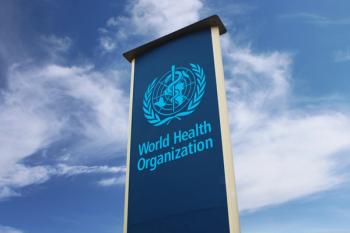
- June 2024
- Volume 30
- Issue 7
June 2024 Health Equity News
Social Equity, Strong Health Care Systems Can Improve Advanced Breast Cancer Outcomes Globally, Review Finds
Advanced breast cancer can be improved and resolved through more robust health systems or pathways, as well as social education across the cancer continuum, according to a recent review article that addressed disparities in global breast cancer outcomes.1
Seminars in Oncology Nursing described breast cancer as a heterogenous disease, typically defined by hormone receptor expression pattern (estrogen/progesterone receptors and HER2). When breast cancer spreads, it develops into advanced breast cancer, and survival rates fall. Advanced breast cancer has a high prevalence rate in low- and middle-income countries, but accurate reports of patients with advanced breast cancer in these countries are unlikely, because cancers are underreported to national registries and histologic diagnosis required for registry confirmation is difficult to establish.1
The authors outline the current approach for treatment, starting with systemic anticancer therapy, such as endocrine therapy (ET) in conjunction with cyclin-dependent kinase 4/6 inhibitors as the first-line standard of care for hormone receptor–positive (HR+)/HER2– breast cancer.
Alternatively, in HER2+ disease, anti–HER2-targeted therapy is combined with taxane-based chemotherapy in first-line treatment throughout 6 or more cycles. If the disease is HR+, this treatment is typically followed by anti–HER2-targeted therapy until disease progression or combined with anti-HER2+ ET until disease progression. If the disease is HR+, it will combine with anti-HER2+ ET until disease progression.1
Standard-of-care treatment for a germline BRCA mutation and PD-L1 testing in the triple-negative breast cancer setting are only considered when patients have access, which the authors note may not be the case in all populations. Polymerase inhibitors have gained popularity recently, but access is limited in many low- and middle-income countries as well as in several populations within high-income countries.1
Disparities within health care systems are seen in the treatment of advanced breast cancer. The authors reviewed research showing that later-stage diagnosis was found to be more common among marginalized communities, socioeconomically deprived areas, and older women.2
The authors cited a 2023 retrospective, multi-institutional cohort study that enrolled patients with stage I to IV breast cancer and evaluated them based on neighborhood disadvantages relating to cancer-specific survival using individual socioeconomic strata, comorbidities, risk factors, access to care, and tumor type. Results showed that women living in the most disadvantaged conditions were less likely to survive compared with those living in the most advantaged neighborhoods.3
The study findings support the argument that access to preventive medicine is not universal, which can further be proven through the lack of routine funding for medications. For example, a study from the United Kingdom looked at prescribing patterns for tamoxifen, a primary treatment option for advanced breast cancer with an overall response rate of 34%. The study showed regional entities in the UK assigned to make health coverage decisions often failed to pay for tamoxifen for postmenopausal women with a high risk of recurrence.1
In 2019, the Advanced Breast Cancer Global Alliance Meeting in Lisbon, Portugal, with representatives from 27 countries, identified unmet needs and gaps in advanced breast cancer care. Problems identified included patient knowledge gaps surrounding diagnosis and management of advanced breast cancer, an undetermined role of patients in shared decision-making with physicians, lack coordination of multidisciplinary care endeavors, lack of access to advanced breast cancer clinical trials, and lack of guidance for friends, family, and caregivers in supporting patients with advanced breast cancer.4
An integral component in the management of advanced breast cancer is palliative care, which focuses on quality of life and symptom control. Patients with advanced breast cancer have benefited extensively from support groups, navigation programs, and psychosocial interventions. A project funded by Pfizer Oncology that awarded $1.5 million in grants to 51 groups in 35 countries has educated about 1,176,000 people. Continued training on palliative care and advocacy among health care professionals has enabled approximately 2600 of them to gain new knowledge.1
Studies show that patients with advanced breast cancer benefit from emotional support, clear information, and consistent care. However, low- and middle-income countries face hurdles in training specialist nurses due to workforce shortages, low pay, cultural stigmas, and limited educational resources. Breast cancer care itself can be difficult due to lack of knowledge, cultural barriers, and limited resources.1
Global data from the National Cancer Database analyzed records of palliative care used between 2004 and 2020. Although significant increases in palliative care were evident, underserved populations were the least likely to receive palliative care. The American Association for Cancer Research reported that non-Hispanic Black, Asian or Pacific Islander, and Hispanic patients were 13%, 26%, and 35% less likely to have the option for palliative treatment compared with non-Hispanic White patients and those who identified as American Indian, Alaska Native, or another ethnicity.5
Specialist nurses with expertise in oncology and palliative care help improve patient satisfaction and overall care because advanced breast cancer education focuses on disease background, treatment options, supportive care, communication, cultural competency, emotional intelligence, teamwork, leadership, and self-care for nurses. However, research found there are unmet needs in establishing comprehensive, accessible advanced breast cancer education and specialized training programs overcoming geographic and linguistic disparities. The review authors cited an example of an international online education program directed to nurses includes translations for 15 different languages.1
To improve breast cancer outcomes globally, the review authors concluded, countries need stronger health systems, public education, and research focused on specific populations. Funding and addressing social factors are crucial to ensure equitable access to care throughout the entire cancer journey, keeping the patient at the core.
References
1. Ghose A, Stanway S, Sirohi B, Mutebi M, Adomah S. Advanced breast cancer care: the current situation and global disparities. Semin Oncol Nurs. 2024;40(1):151551. doi:10.1016/j.soncn.2023.151551
2. All-Party Parliamentary Group on Breast Cancer. A mixed picture: An inquiry into geographical inequalities and breast cancer. February 2018. Accessed June 11, 2023. https://breastcancernow.org/sites/default/files/appgbc_a_mixed_picture.pdf
3. Goel N, Hernandez A, Thompson C, et al. Neighborhood disadvantage and breast cancer–specific survival. JAMA Netw Open. 2023;6(4):e238908. doi:10.1001/jamanetworkopen.2023.8908
4. Fallowfield L, Boyle FM, Travado L, et al. Gaps in care and support for patients with advanced breast cancer: a report From the Advanced Breast Cancer Global Alliance. JCO Glob Oncol. 2021;7:976-984. doi:10.1200/GO.21.00045.
5. Racial/ethnic minority patients may be less likely than White patients to receive palliative care during breast cancer treatment. News release. American Association for Cancer Research. September 29, 2023. Accessed April 30, 2024. https://bit.ly/4bAX1qc
Michael Morse, MD, MHS, FACP, Discusses Gaps in Care Access, Equity in HCC
In an interview with Evidence-Based Oncology (EBO), Michael Morse, MD, MHS, FACP, professor of medicine at Duke University School of Medicine and medical oncologist at Duke Cancer Center, Durham, North Carolina, explained gaps in care access and equity that need to be addressed to ensure all patients with liver cancer can get the care and treatments they need.
This interview is lightly edited for clarity.
EBO: What gaps need to be addressed to improve equity and access to care for patients with liver cancer?
Morse: One of the most critical aspects of the best outcome for any patient across any demographics is getting a multidisciplinary evaluation, because we have many therapies for cancer and liver cancer. We have surgeries, ablations, locoregional therapies that involve vascular delivery of therapies, and then we have systemic therapies, and of course transplant as well. I don’t think any one clinician can know for certain whether a single strategy is absolutely the best for a particular patient, or whether to discount any.
There are some obvious metrics: If you have very advanced disease, you’re not going to be a transplant candidate, for example. I think it’s still very helpful for people to get that multidisciplinary evaluation of some sort. It doesn’t necessarily have to be in a particular clinic, doesn’t have to necessarily be a conference, but that just discussions have been held—and obviously taking into account patient preferences as well, and their comorbidities. That’s really going to drive outcomes.
One of the problems is many people don’t have access to all of those opinions, and I think that’s really where [we] need to put more effort. Although there certainly could be biases, both historical and contemporary, and financial issues, and other social issues that certainly do impact care—we have to try to mitigate those as much as we possibly can—it’s ultimately reflected in whether people get that full review, and then once they get the review, are able to get the particular therapy that appears to be best for them.
Once patients have had a particular therapy, keep asking those questions, because now that we have more effective systemic therapies, for example, we are seeing people who can go back and have a locoregional therapy or even a surgery, or, in rare instances, a transplant. I think that it’s important that people also still have access to centers that can provide all this care, at least opinions, to people. So, how do we make sure that people who aren’t in a major center, or it’s more challenging to make the trip, or financially [they’re] having difficulty accessing those drugs [can get access]? Obviously, we have to work on all of those problems.
Breast Cancer Treatment Disparities Impact Survival Based on Race, Age, Socioeconomics
The FDA’s Medical Devices Advisory Committee has strongly recommended the approval of Guardant Health’s Shield blood test for colorectal cancer (CRC) screening in adults 45 years of age and older who are at average risk of developing this disease.1 The recommendation represents the committee’s consensus on the safety and efficacy of Shield in its proposed intended use, as well as the committee’s conclusion that the test’s benefits as a primary noninvasive screening option outweigh any potential risks, according to a press release.
The FDA is expected to decide on the approval of Shield later in 2024.
“The advisory committee’s strong support for the approval of Shield reinforces the crucial role that a blood test option can have in improving CRC screening rates for those at average risk,” AmirAli Talasaz, co-CEO of Guardant Health, said in a statement.1 “Despite the importance of detecting CRC early, there are notable barriers that can deter average-risk Americans from completing existing screening methods. Shield effectively detects cancer at an early stage when it is most treatable. Providing people with this blood test alongside other noninvasive stool tests can increase the rate of colorectal screening and potentially reduce preventable CRC deaths.”
The Committee’s recommendation is based on Guardant’s premarket approval application for Shield, which include findings from the observational ECLIPSE study (NCT04136002) investigating the performance of Shield for detecting CRC in adults at average risk of developing CRC. Results from the study, which were published in The New England Journal of Medicine, demonstrated that Shield had an 83.1% CRC detection sensitivity rate, meaning that 83.1% of patients with CRC detected by colonoscopy had a positive Shield result (95% CI, 72.2%-90.3%).2
Shield demonstrated an 89.6% advanced neoplasia specificity rate, meaning that 89.6% of patients without advanced colorectal neoplasia detected by colonoscopy had a negative Shield result (95% CI, 88.8%-90.3%). The performance of Shield is within the range of the performance of existing stool-based tests that are used as primary CRC screening options, which have overall sensitivity rates ranging from 67% to 92%.1
Shield is a qualitative in vitro diagnostic test designed to detect CRC derived from cell-free DNA alterations in blood collected with the Guardant Blood Collection Kit. Patients with an “Abnormal Signal Detected” may have CRC or advanced adenomas and are recommended to receive colonoscopy evaluation. For patients at high risk of developing CRC, Shield is not a replacement for diagnostic or surveillance colonoscopy.
The Committee panel members voted on 3 questions about the use of Shield in patients meeting the criteria for Shield use that are outlined in the test’s proposed indication. An 8-to-1 vote demonstrated the panel’s reasonable assurance that Shield is safe; a 6-to-3 vote demonstrated the panel’s reasonable assurance that Shield is effective; and a 7-to-2 vote demonstrated the panel’s belief that the benefits of Shield outweigh its risks.
“Sadly, 76% of deaths caused by CRC occur in individuals who are not up to date with their screening,” Daniel Chung, MD, a gastroenterologist at Massachusetts General Hospital and a professor of medicine at Harvard Medical School, both in Boston, added in the press release. “Clinical evidence and CRC screening guidelines acknowledge the value of offering choice to individuals at average risk for CRC and highlight the role of patient preference in test selection and CRC screening completion.”
This article first appeared on OncLive®.
References
1. FDA advisory committee panel strongly recommends approval of Shield blood test for colorectal cancer screening as a primary non-invasive screening option. News release. Guardant. May 23, 2024. Accessed May 24, 2024. https://bit.ly/3wLMvgX
2. Chung DC, Gray DM 2nd, Singh H, et al. A cell-free DNA blood-based test for colorectal cancer screening. N Engl J Med. 2024;390(11):973-983. doi:10.1056/NEJMoa2304714
Articles in this issue
over 1 year ago
Using NLP to Find “Hidden” Patients for Clinical Trialsover 1 year ago
Can RWD Sources Estimate OS in Oncology Research?over 1 year ago
Chart Abstraction Pilot Improves Data Accuracyover 1 year ago
CMS Reopens EOM With Payment Boost, Extends Model to 2030Newsletter
Stay ahead of policy, cost, and value—subscribe to AJMC for expert insights at the intersection of clinical care and health economics.













































